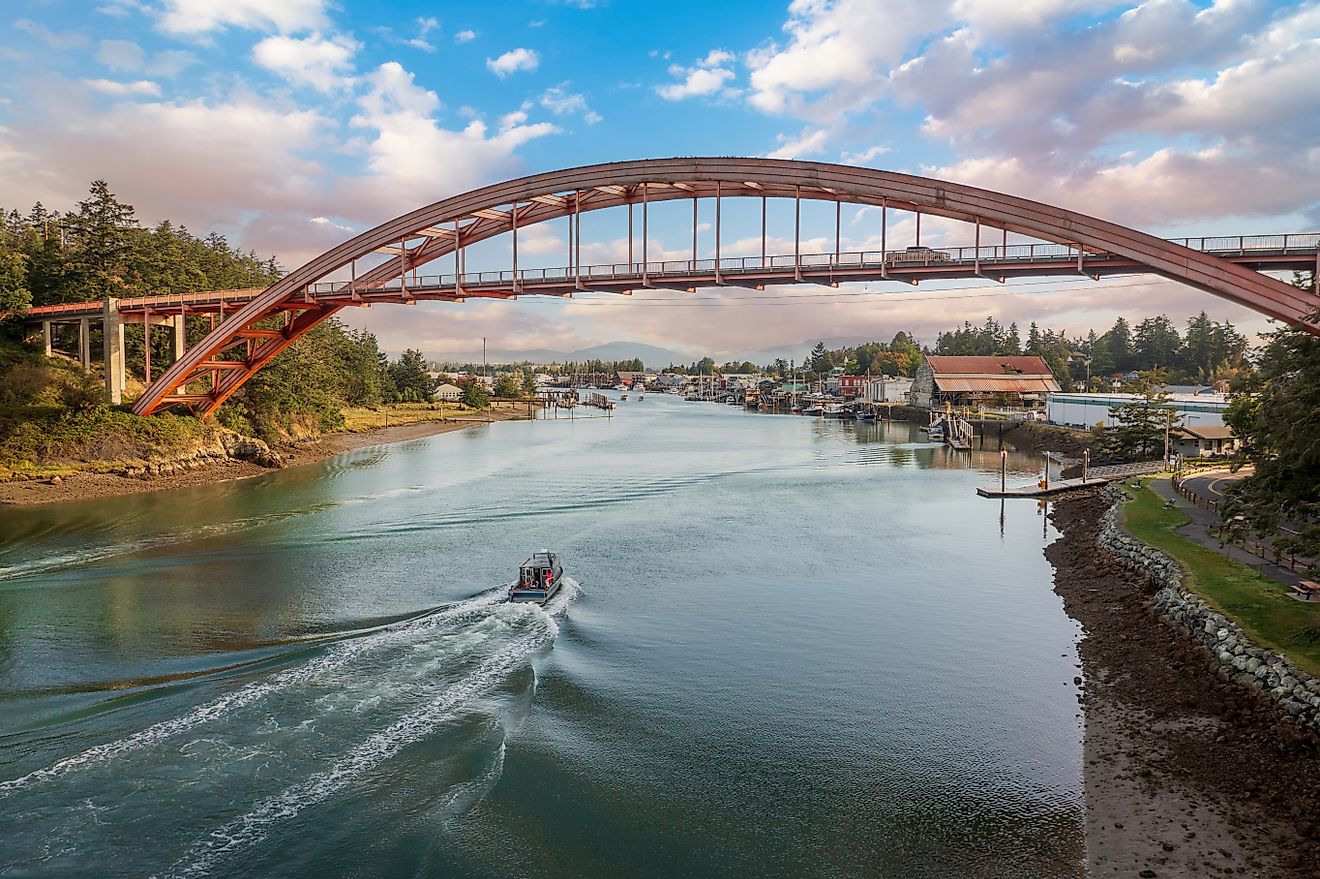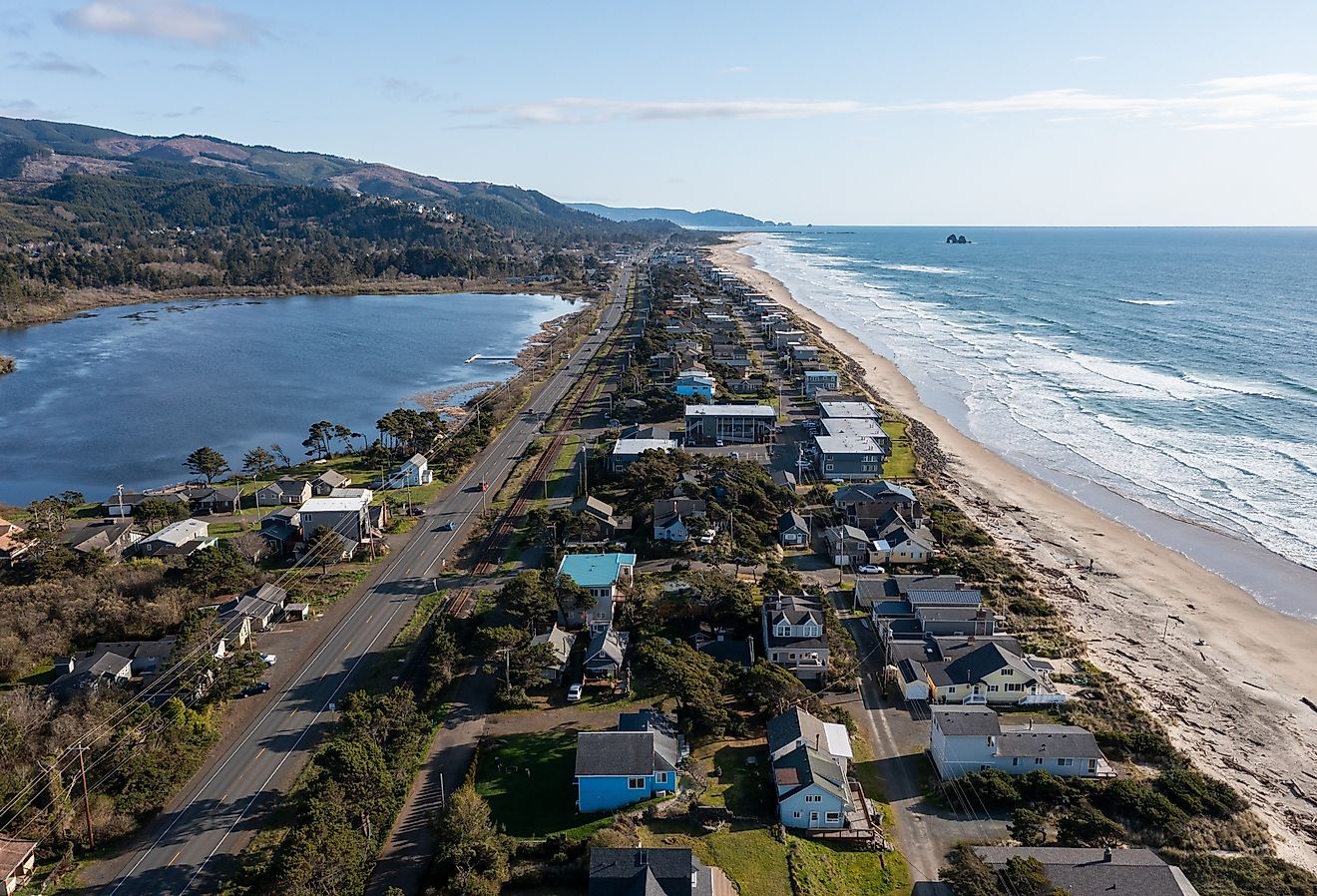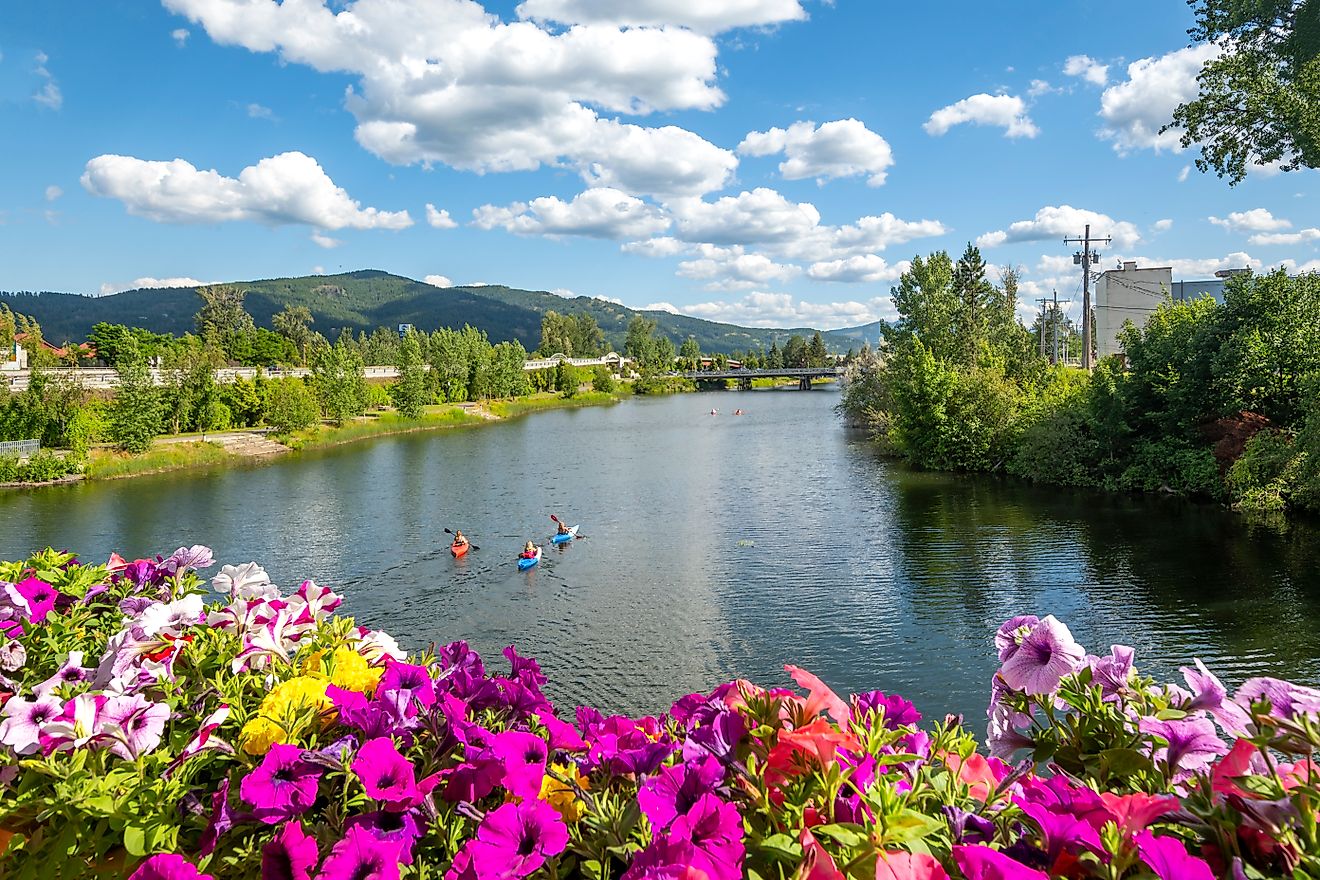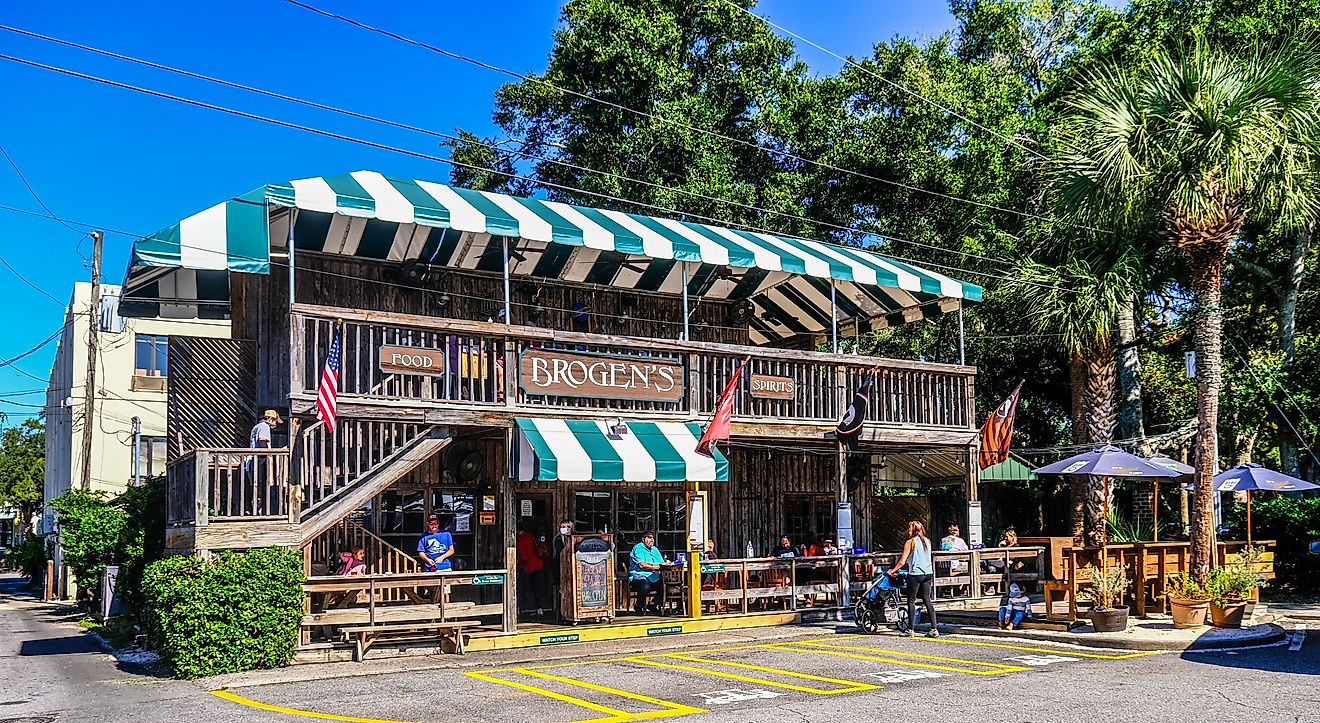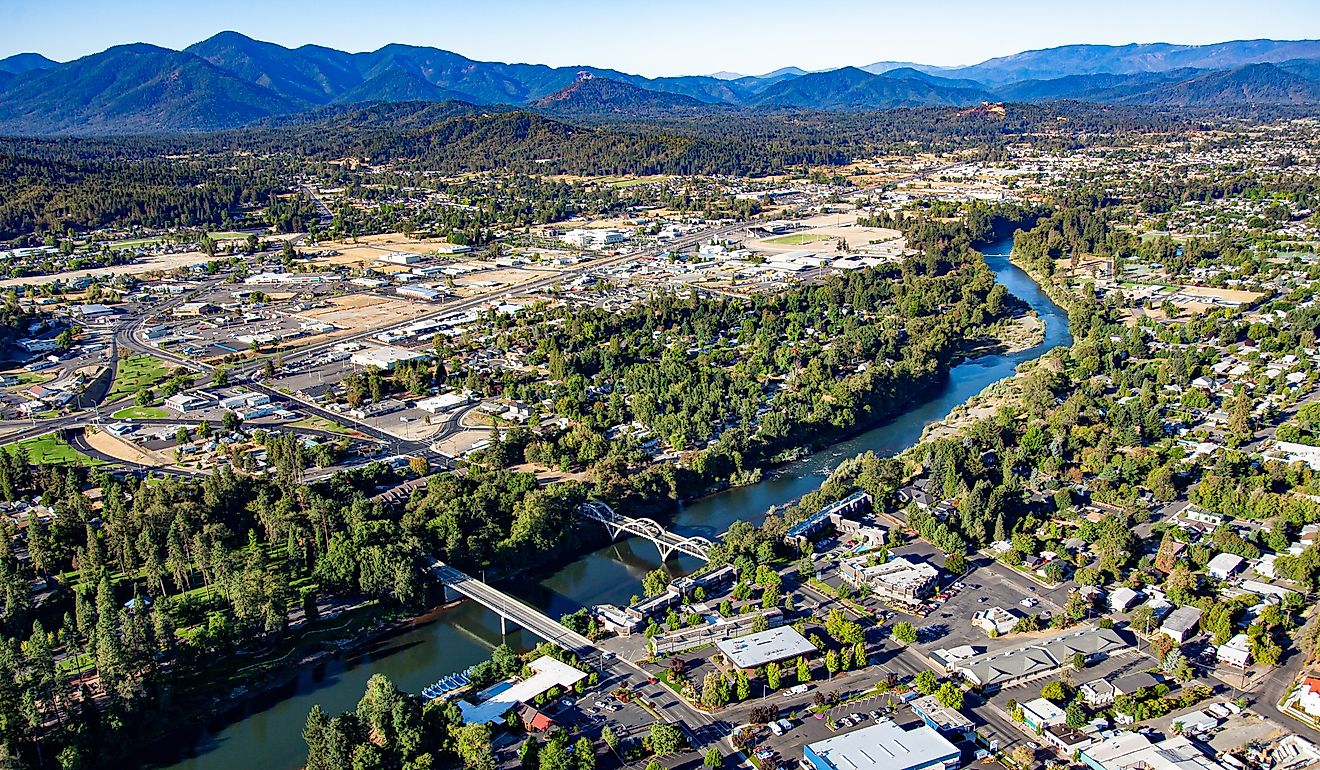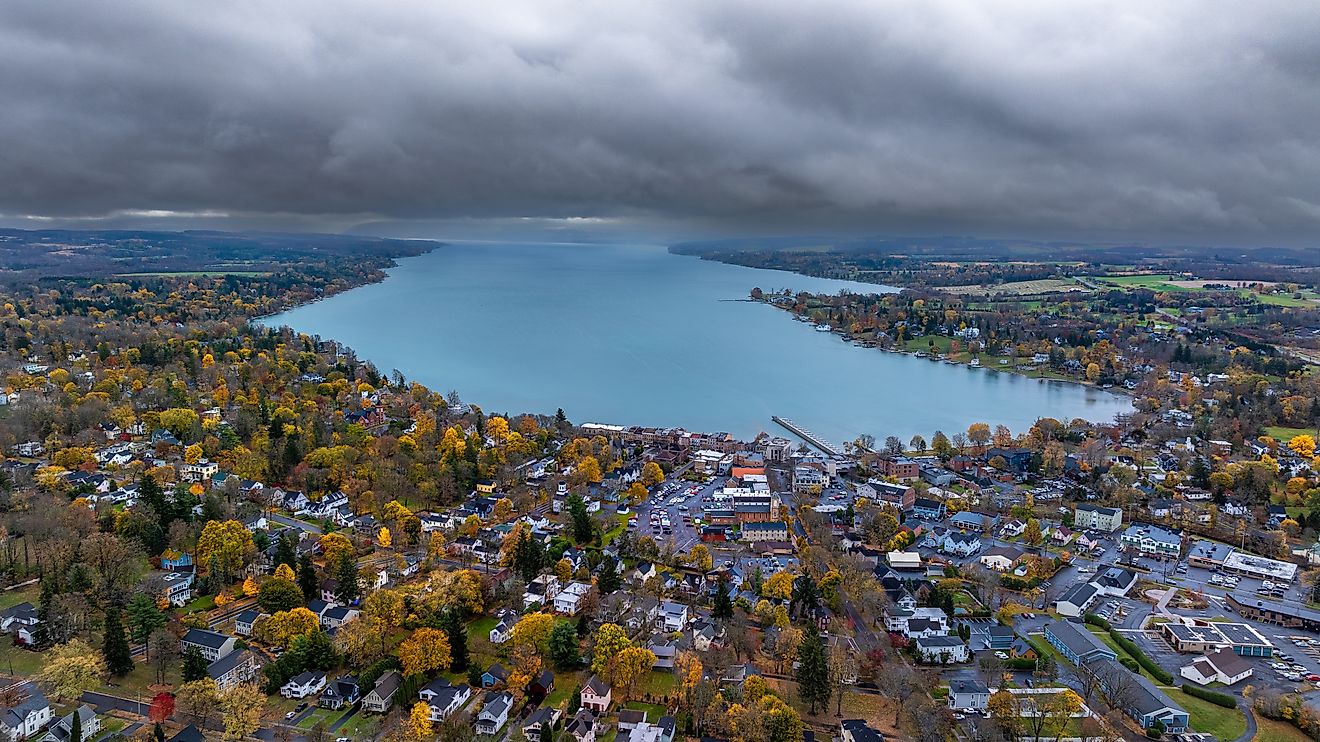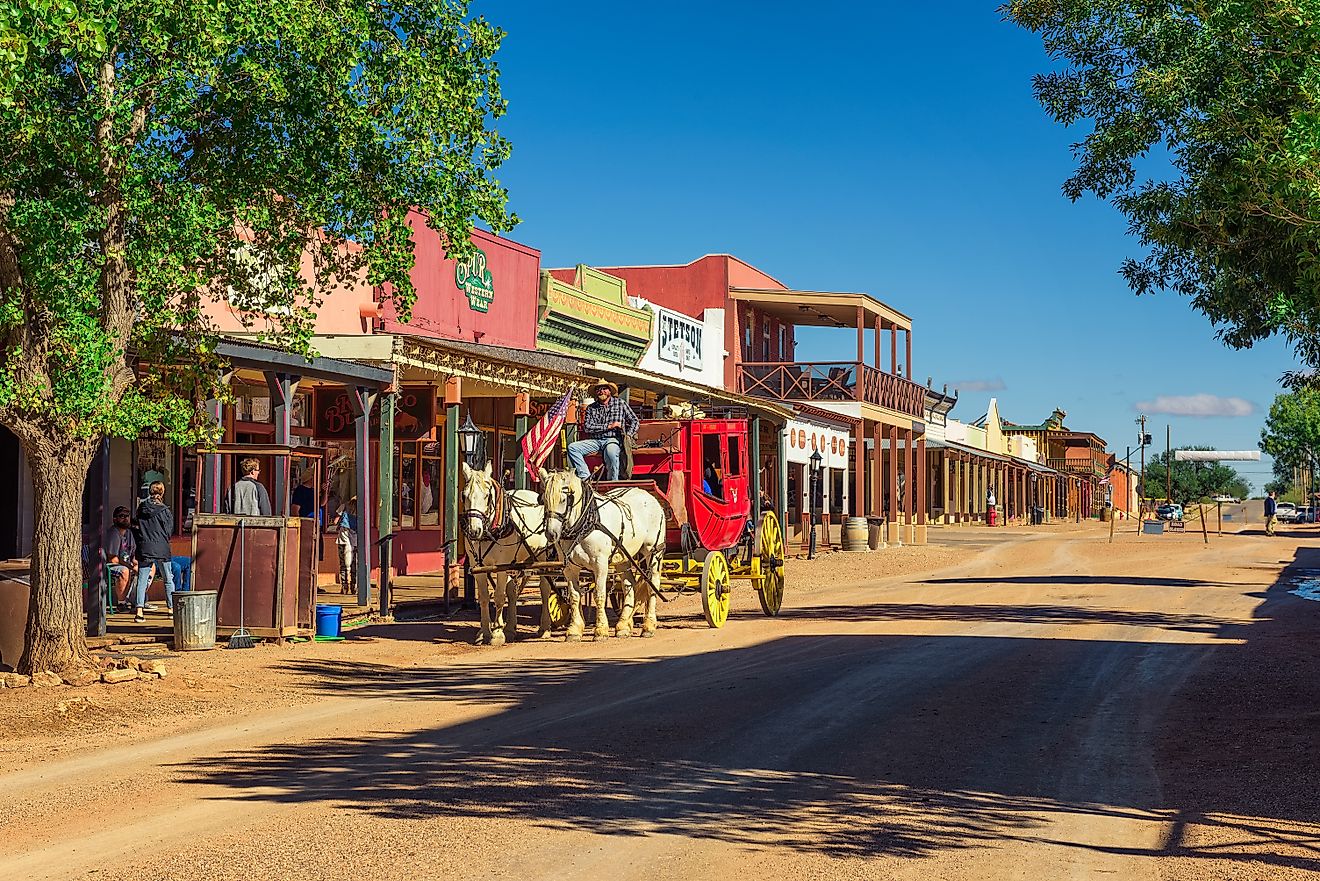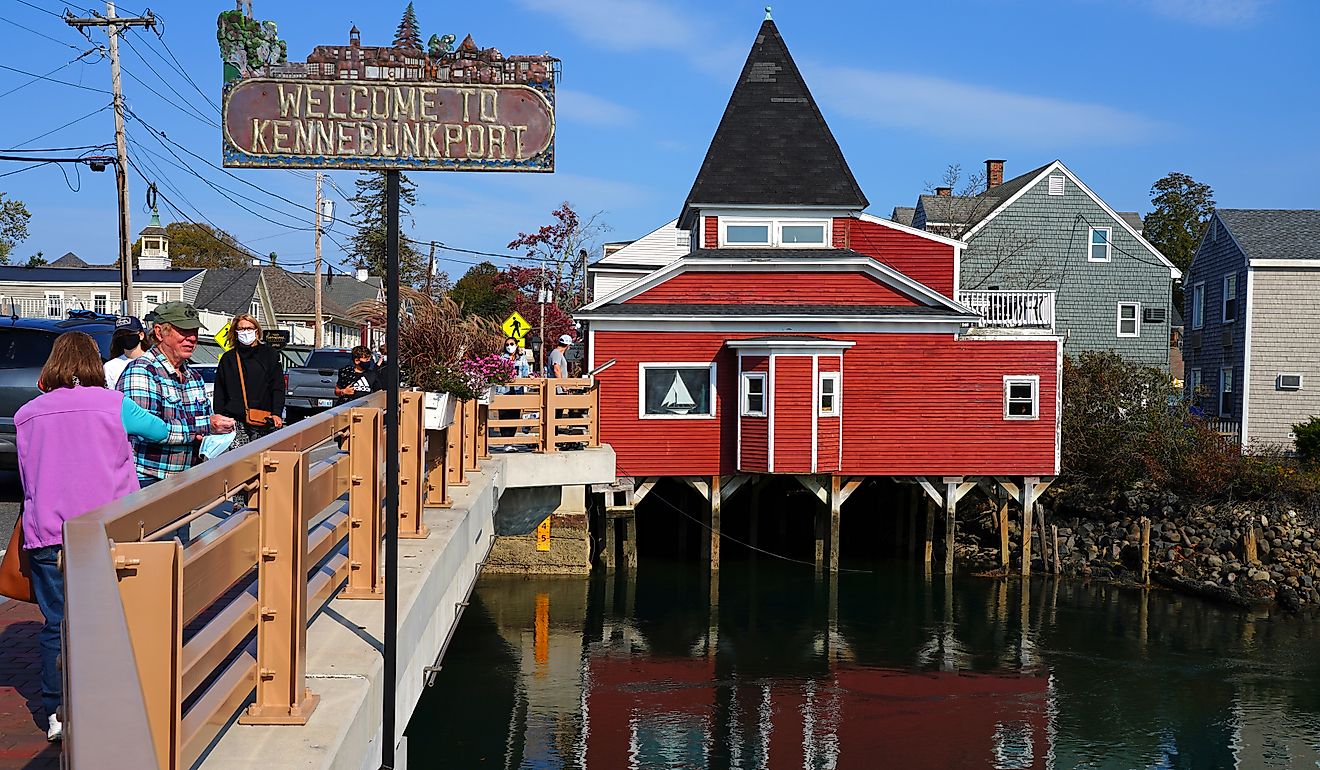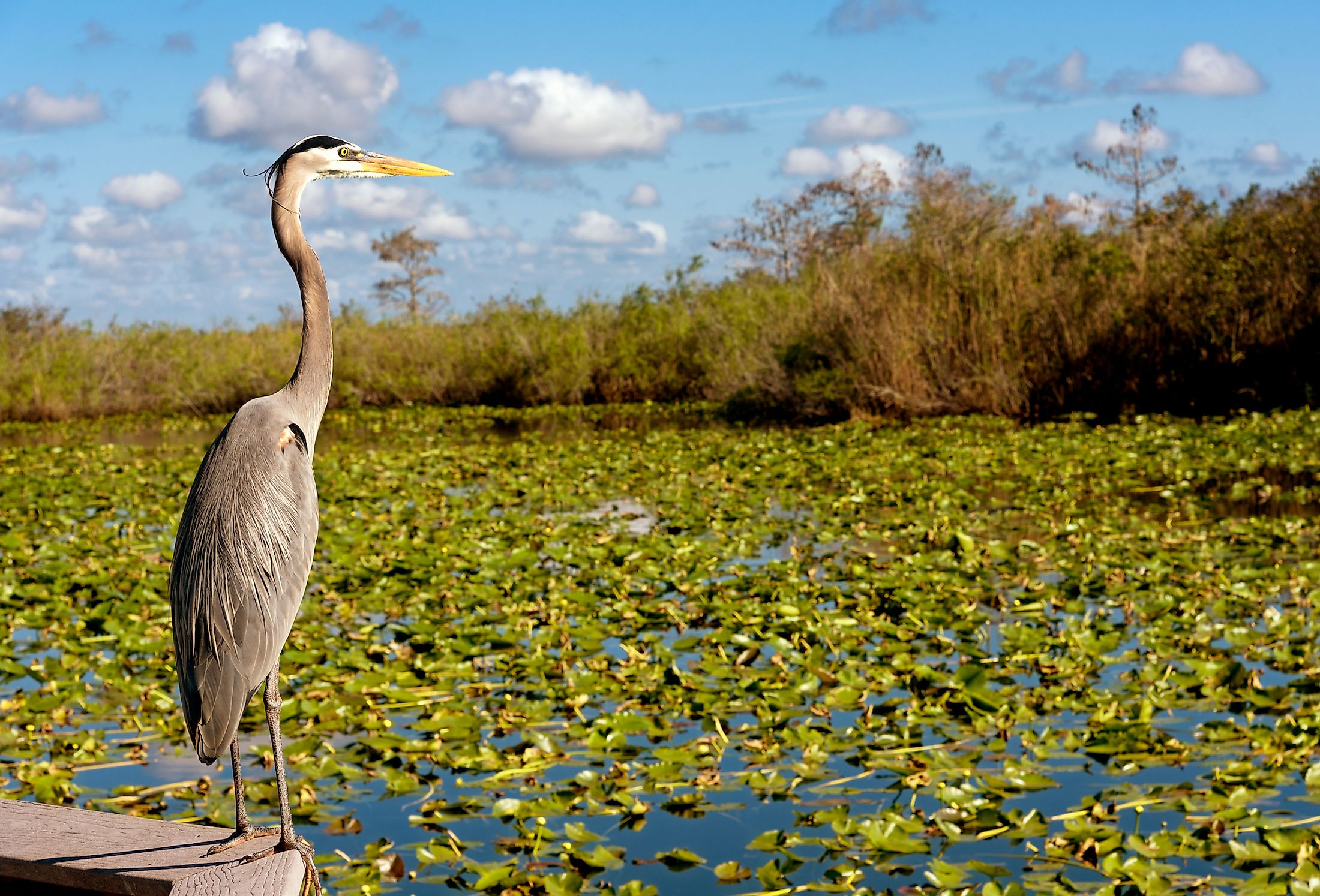
Everglades National Park
A National Park is defined as an area that is created by national governments for the conservation of the natural environment. The National Park Service (NPS), which works under the US Department of Interior, currently manages about 63 natural National Parks in the entire United States. It is estimated that approximately 12% of the total land area in the United States is protected by National Parks, wilderness preserves, and other sites.
Where Is The Everglades National Park?
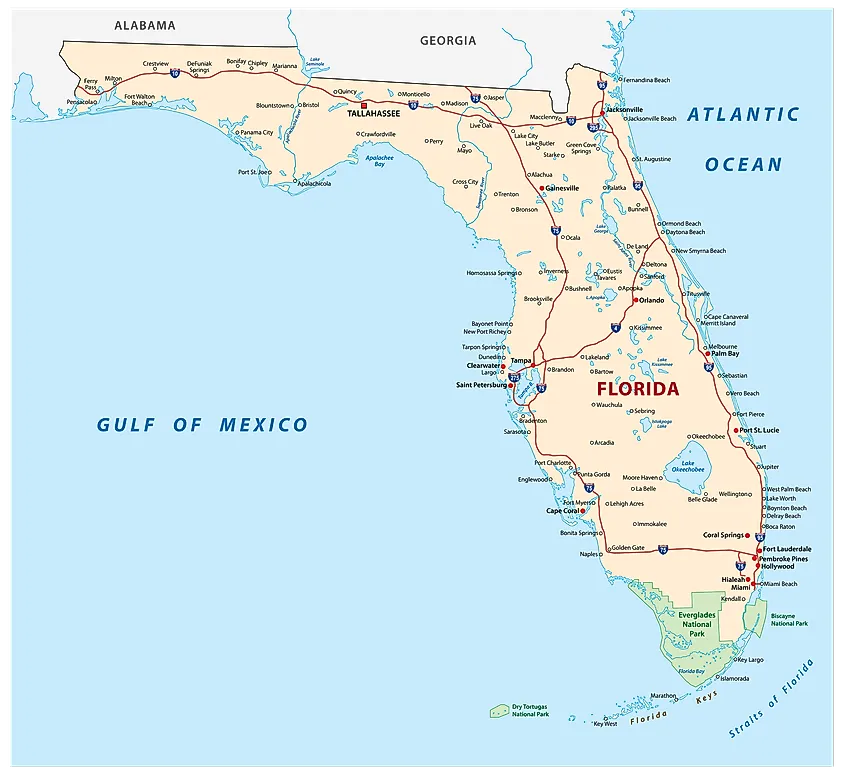
The Everglades National Park encompasses an area of 6,106.6 km2 (1,508,976 acres) and is located in the southern portion of the US State of Florida, stretching over the Floridian Counties of Collier, Monroe, and Miami Dade. This National Park is surrounded by many protected areas including the Big Cypress National Preserve, the Biscayne National Park, the Dry Tortugas National Park, several wildlife refuges, and the Florida Keys National Marine Sanctuary. The Park contains about 20% of the original Floridian Everglades ecosystem and therefore the government declared this area as a National Park to protect its fragile environment from urban development.
After Death Valley and Yellowstone National Park, the Everglades National Park is the third-largest National Park in the United States. The National Park was established on December 6, 1947, and is considered as one of the largest subtropical wilderness reserves in the contiguous United States. Together with the Dry Tortugas National Park, the Everglades National Park was designated as an International Biosphere Reserve by UNESCO in 1976. It was also listed as a World Heritage Site on October 24, 1979, and as a Ramsar Wetland in 1987.
Geography
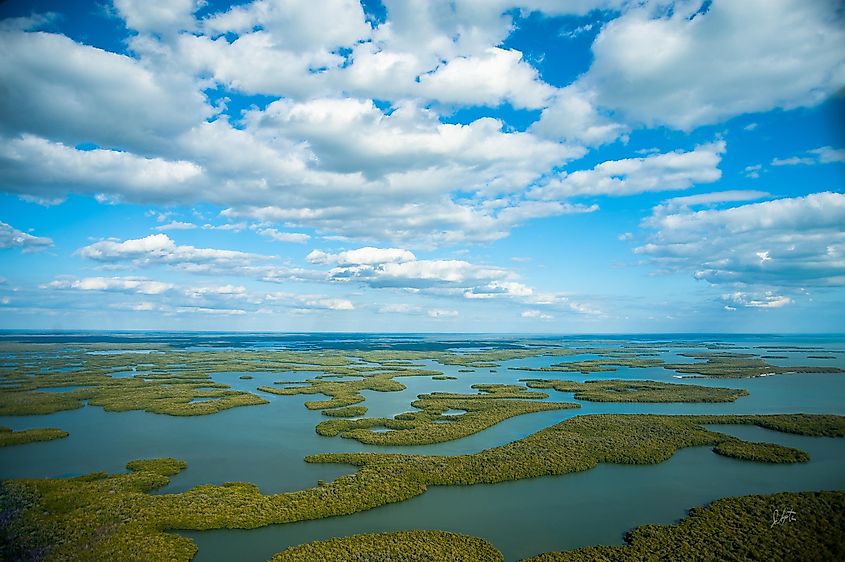
The Everglades National Park comprises several significant habitats such as extensive mangrove forests, freshwater sloughs, saltwater marshes, tropical hardwood hammocks, cypress, and pine woodlands, open sawgrass prairies, marl prairies, wet prairies, islands of Florida Bay, and seagrass ecosystems. This vast network of wetlands and forests that make up the fragile ecosystem of the National park is fed by a very shallow, slow-moving river water from Lake Okeechobee. The Park also features the largest contiguous stand of protected mangrove ecosystem in the entire Western Hemisphere.
According to the Köppen climate classification, the Everglades National Park experiences a tropical savanna climate. The dry winter season from December to April is characterized by low humidity and mild temperatures averaging 12 to 25 °C. The hot and humid summer season from May to November is characterized by high temperatures averaging 30 to 35 °C. The average annual rainfall is about 1,379 mm, the major portion of which falls during the wet season. Thunderstorms also frequently occur during this time.
Wildlife
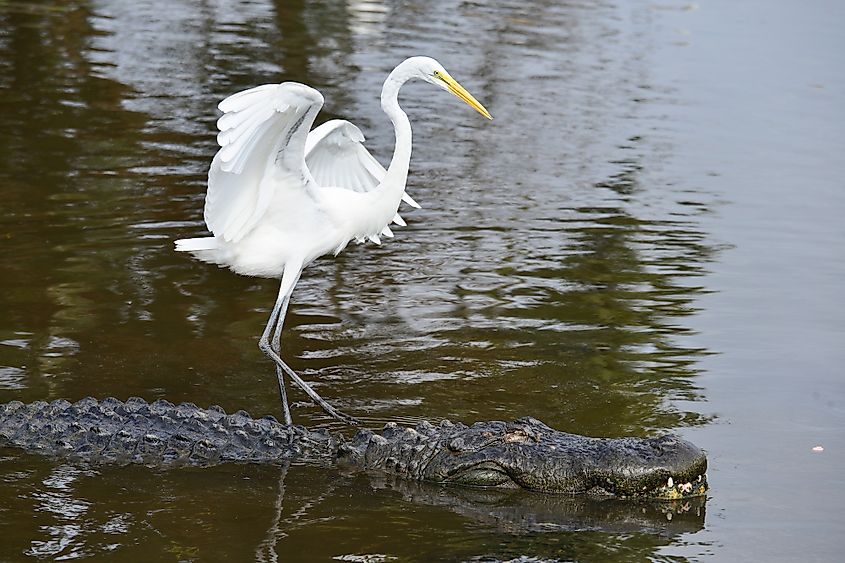
The mosaic of important habitats that are found within the Everglades National Park supports a rich assemblage of flora and fauna that are unique to the region and are found nowhere else on Earth. Due to its location at the interface of the temperate region of North America and the tropical region of the Caribbean, the Everglades National Park hosts floral species from both the biomes. The park serves as an important habitat for a wide variety of floral species like wildflowers, broad-leafed aquatic plants, muhly grass, succulents, various scrub bushes like saw palmetto, poisonwood, wild coffee, and white indigo berry; trees such as southern live oaks, gumbo-limbo, wild tamarind, slash pines, and conifers; and epiphytes like bromeliads, orchids, ferns, and Spanish moss. Mangroves like red mangroves, black mangroves, and white mangroves are found in the Everglades National Park.
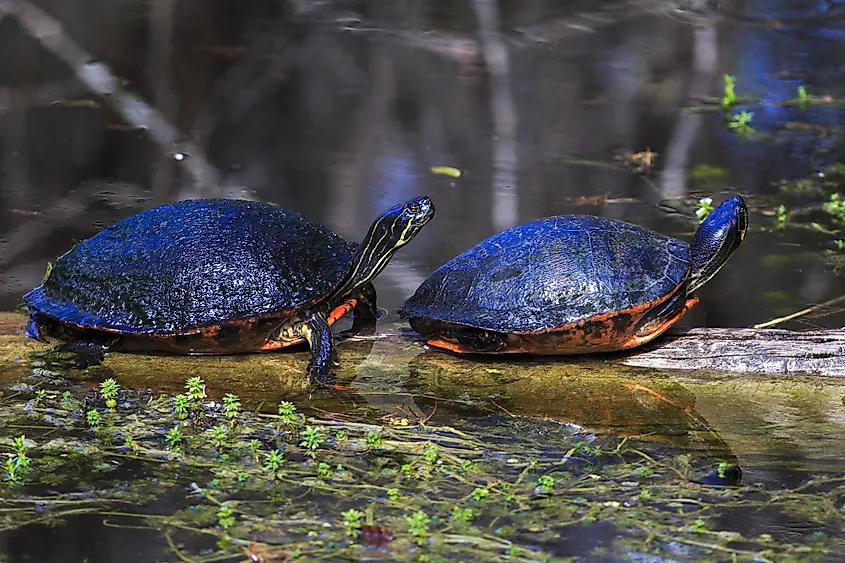
The Everglades National Park is home to a large number of faunal species. Various insects and other invertebrate animals like crustaceans, mollusks (little tree snail), spiders, centipedes, and millipedes are found here. The park provides an ideal habitat for several amphibian species like the American green tree frog and southern leopard frog. Several reptilian species like the eastern diamondback rattlesnake, eastern indigo snake, green anole, water moccasin, American alligator, American crocodile, and the endangered Atlantic green sea turtle, hawksbill turtle, Atlantic ridley turtle, Atlantic loggerhead turtle, and leatherback sea turtle are found here.
More than 350 species of birds have been recorded within the boundaries of the Everglades National Park. Some of the notable avifauna that is found here include wading birds like egrets, herons, brown pelicans, wood ibis, and roseate spoonbills; and other birds like Everglades snail kites, limpkins, woodpeckers, northern cardinals, bald eagles, barred owls, loggerhead shrikes, anhingas, wild turkey, belted kingfisher, Rothschild’s magnificent frigatebird, mangrove cuckoos, white-crowned pigeons, Cape Sable seaside sparrow, wood storks, and black skimmers.
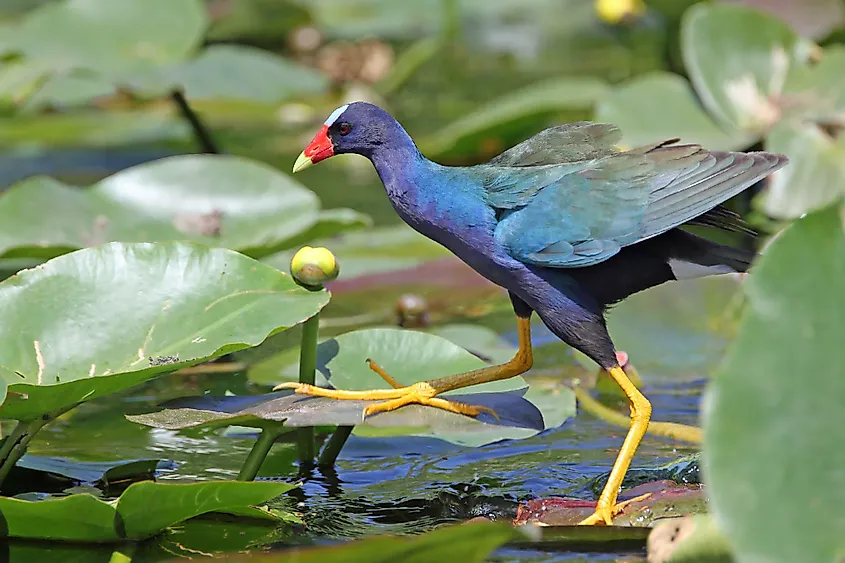
Over 300 species of fish are found in the freshwater marshes and the marine coastline of the Everglades National Park. Some of the important fish include redfish, bonefish, spotted seatrout, blue tilapia, snook, tarpon, northern red snapper, and bass.
The significant mammals that are found in the Everglades National Park include the critically endangered Florida panther, red fox, mangrove fox squirrel, southern flying squirrel, mink, marsh rabbit, grey fox, Florida black bear, southern flying squirrel, white-tailed deer, raccoon, river otter, bobcat, West Indian manatee, and bottlenose dolphin.
Brief History
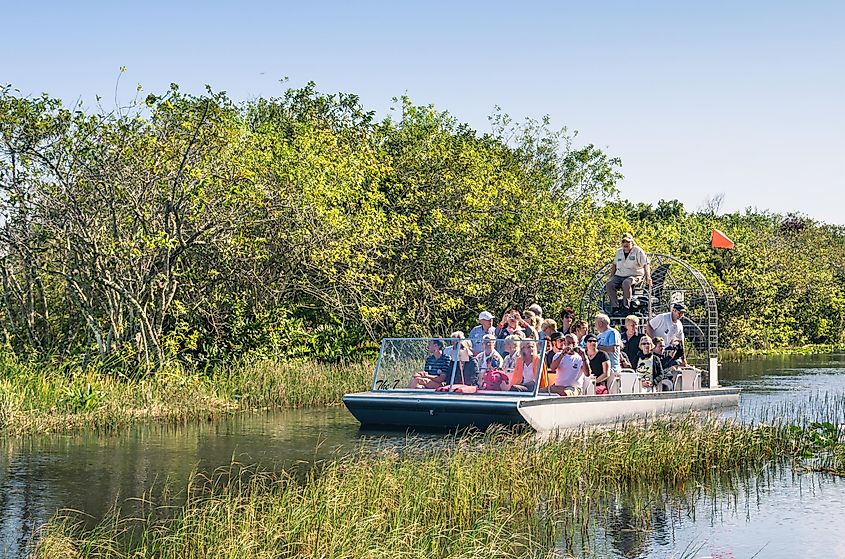
It is believed that humans first started to inhabit the southern region of Florida up to 20,000 years ago. The region that is currently the Everglades National Park was mainly inhabited by the Indigenous Calusa peoples. Several archaeological excavations have found many architectural shellworks, earthenwares, and various other materials which provided ample evidence about the highly organized society that was maintained by the Calusa.
In the late 16th century, Spanish explorers arrived in the region. By the 1700s, the entire tribal population was decimated due to diseases, slavery, and warfare. In the 18th century, the Creeks along with the Seminole and Miccosukee tribes migrated into this region. At the end of the Seminole Wars between the Indigenous peoples and the United States Army, the Seminoles were forcefully relocated to the Indiana Territory in 1842. Some Seminoles settled in the Big Cypress National Preserve area to escape from this forced emigration. In 1928, the construction of the Tamiami Trail began along the northern boundary of the Everglades National Park. After the Seminole Wars, the Americans began to settle in the small communities of Cape Sable, Flamingo, and Chokoloskee along the current Everglades National Park region.
The Everglades National Park is annually visited by thousands of people from all over the world. The busiest tourist season is from December to March. There are three main entry points in the park: The Shark Valley Visitor Center, the Ernest F. Coe Visitor Center, the Flamingo Visitor Center, and the Gulf Coast Visitor Center. The Park also offers a variety of recreational activities like fishing, camping, birdwatching, canoeing, hiking, and wilderness exploration for its visitors.
Threats To The Everglades National Park
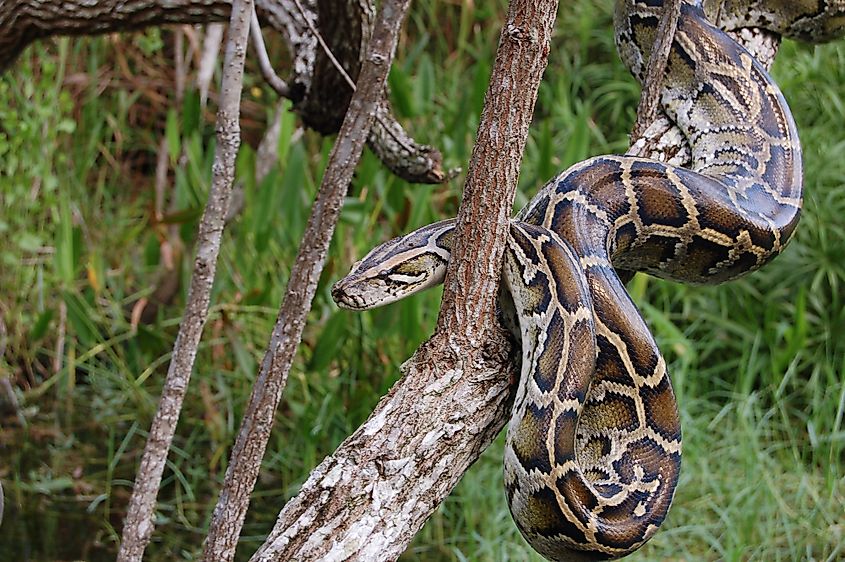
Human activities have led to the introduction of many invasive species in the Everglades National Park. Some of the non-native floral species that are found here include the Australian melaleuca tree, Old World climbing fern, Chinese privet, and Brazilian peppertree. The invasive faunal species include the Asiatic clam, lobate lac scale insect, bromeliad beetle, Mayan cichlid, walking catfish, Cuban tree frog, Monk parakeet, Burmese python, Nile monitor, and wild boar. To prevent new invasions and to keep the invasive species in check, the Comprehensive Everglades Restoration Plan was introduced by the US Government in 2000. In addition to these introduced plant and animal species, the Everglades National Park is also threatened by urban development, water diversion, pollution, and agricultural expansion.
